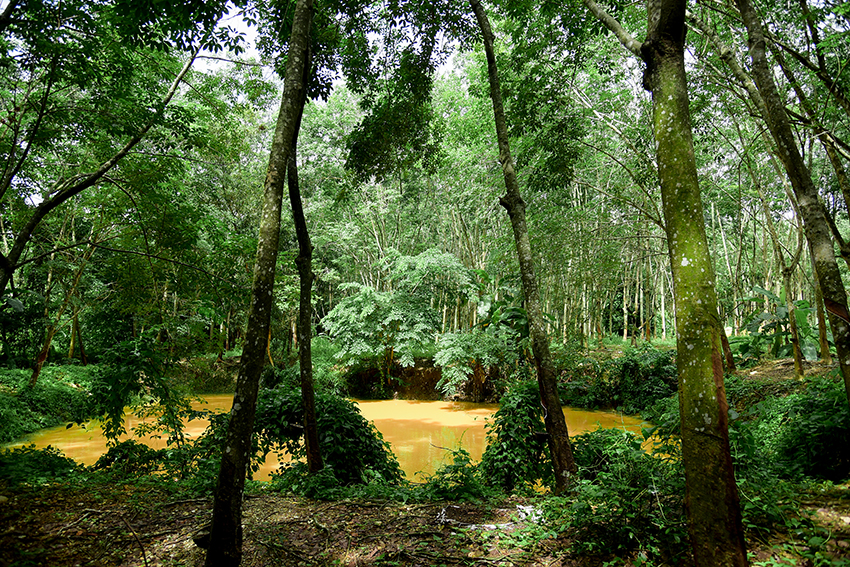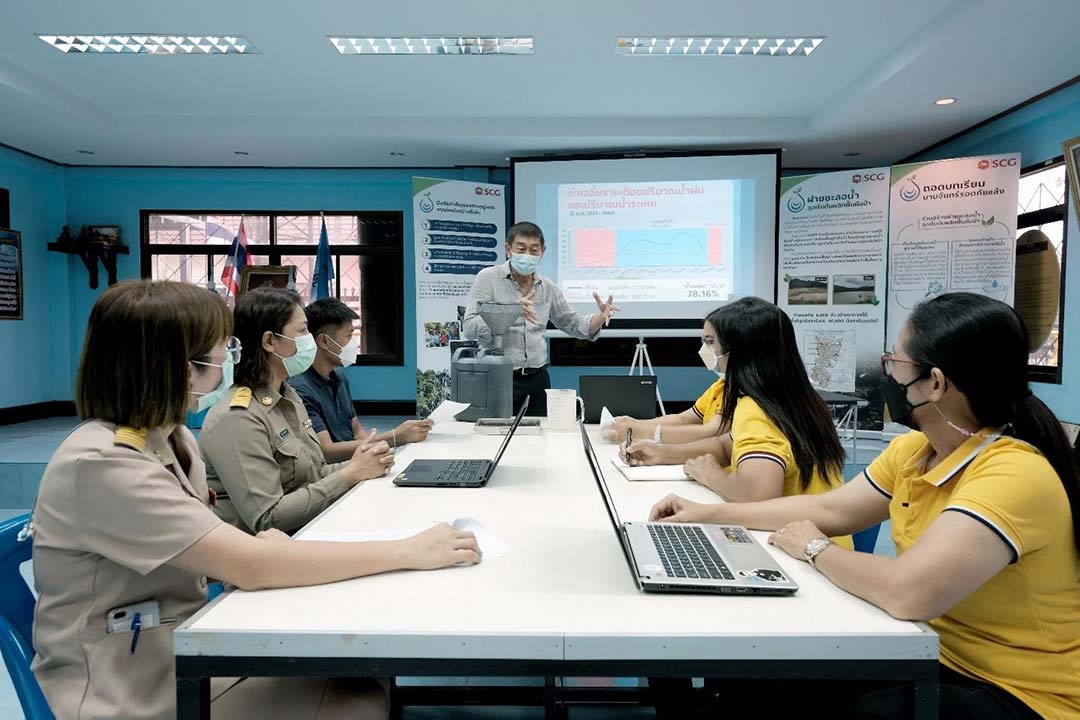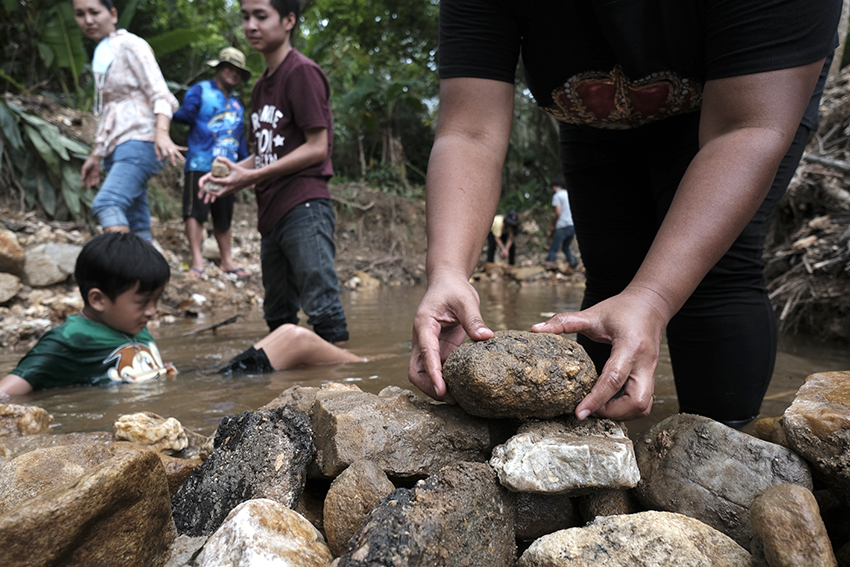Water crises are among the environmental issues we confront almost every year, impacting the way of life and the ecological system. SCG Chemicals, or SCGC, has drawn lessons and accumulated knowledge from community water management projects, having worked hand-in-hand with communities for over 10 years. This has resulted in the "Community Water Management Project: Sustainable Water Management" concept with the water management model "2 Cultivate 2 Collect." This approach encourages communities to independently and sustainably manage their water resources by integrating local wisdom with data management and innovation to restore drought-stricken areas to water sources, prevent flooding crises, improve the quality of life, and empower communities to become "Communities with Good Water Management" sustainably.
Endless Water Challenges in the Past
Looking back to 1988, Khao Yai Da has been continuously threatened by forest fires due to converting forest land to agricultural land. The richness of the forests gradually disappeared, replaced by exposed soil. This reduced the soil's ability to absorb water, leading to rapid runoffs during heavy rainfall and a lack of groundwater during drought. This severely impacted local farmers, who faced significant challenges due to a lack of water for agricultural production. This, in turn, affected household incomes and the overall economy of Rayong Province, given that agriculture is one of the province's primary economic sectors.
For over 20 years, communities surrounding Khao Yai Da faced recurring droughts and grappled with various coping strategies. However, by 2007, Wandee Inthaprom, the village headman of Moo 7, Map Chan Sub-district in Rayong Province, stood up to address these challenges. As a community leader, he bore the hardship of his personal struggles and those of his fellow villagers. Inspired by SCGC's systematic community water management approach, he envisioned a better future for the people of Map Chan. Over the past decades, these efforts, through a process of trial and error, have led to the "Sustainable Community Water Management Handbook," based on the concept of the "Community Water Management Project: Sustainable Water Management" with the water management model "2 Cultivate 2 Collect."
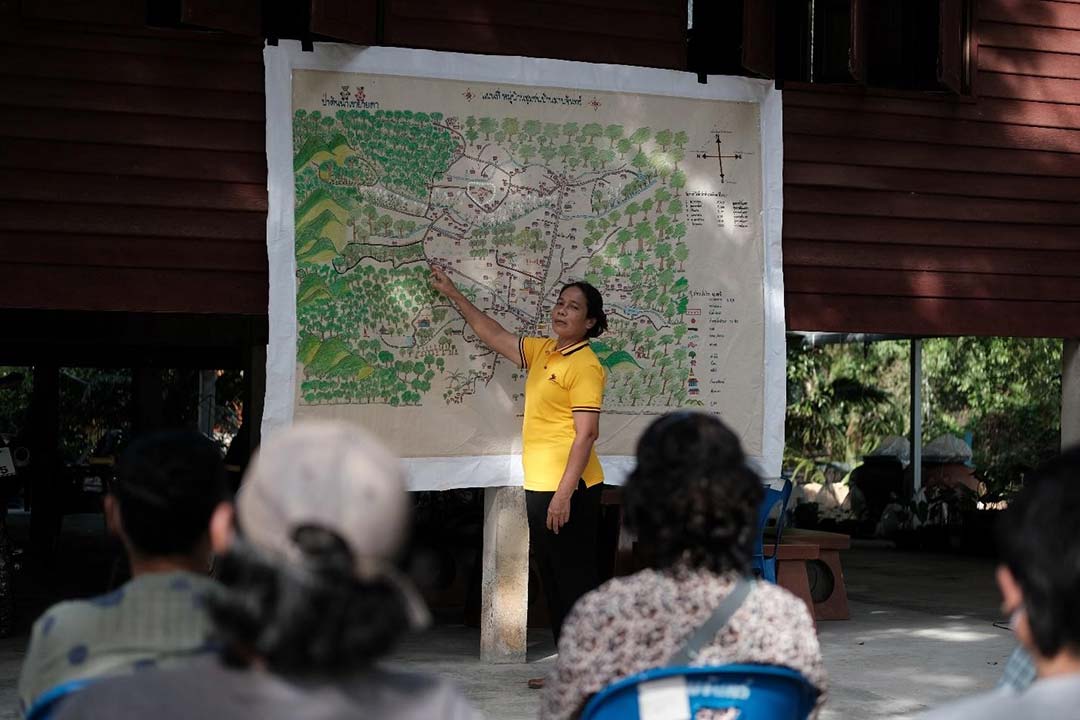
Community Water Management Project: Sustainable Water Management with "2 Cultivate 2 Collect" Model
The "Community Water Management Project: Sustainable Water Management" with the "2 Cultivate 2 Collect" Model" comprises four main elements: Cultivating human potential by empowering a group of community leaders who are selfless, decisive, and base their decisions on listening to diverse opinions; Cultivating rules by establishing community water usage rules grounded in mutual support and understanding; Collecting water resources by maximizing water storage in the area by rejuvenating upstream sources and community reservoirs, ensuring water supply during droughts, and applying appropriate technology and innovations; and Collecting data by collecting data on water resources to accurately forecast future water scenarios, along with identifying sustainable water management strategies based on factual knowledge, rather than relying on mere intuition or assumptions.
"
The SCGC team became like our family. They taught our villagers the importance of collecting data for water management, from creating water maps, charting every stream and noting every well in the village. Also, every morning, we have to record data such as the day's temperature, the rate of water evaporation, and the amount of rainfall. It is as if our entire community has now become researchers.
"
Creating Water Balance: Seeking Sustainable Water Collection Methods
From research and data collection to actual implementation, we have engaged with the community to understand the water situation of their area through the "Water Balance Equation." This begins with collecting data on "source water," which includes rainwater, well water, and water from streams and canals in the village, as well as the amount of water consumed by natural vegetation and the evaporation rate. Every-day household equipment has been repurposed into simple tools for collecting daily data. At the same time, we also survey and document the "water consumption" of the community as a whole—households, agriculture, and livestock included. Once both data sets are collected, they are analyzed to determine this balance, providing insights into the sufficiency of "remaining water" and helping to predict water deficits or surpluses, compared with historical trends and the severity of water shortages each month.
Collecting Rainwater for Ground Recharge
Once the water situation was well understood, the next step was to design suitable water management strategies for the rainy and dry seasons. Central to this effort was understanding the principle of "sustainable water collection," which involves maximizing rainwater collection from upstream to downstream areas. Dr. Pongsak Witthawatchutikul, a former expert in watershed conservation and management from the Department of National Parks, Wildlife, and Plant Conservation and a consultant for the project, elaborated on systematic water collection: "We recommend reducing water runoff and storing water for use during the dry season. This begins with rehabilitating upstream forests by planting a 5-tier forest system to slow down rainwater, allowing the soil to absorb more moisture. Additionally, constructing check dams retains water from hillsides, conserving moisture, creating terraces, dredging canals to store more water, and creating underground water banks for ground recharge. All these initiatives are exemplary methods of sustainable water collection from upstream to downstream."
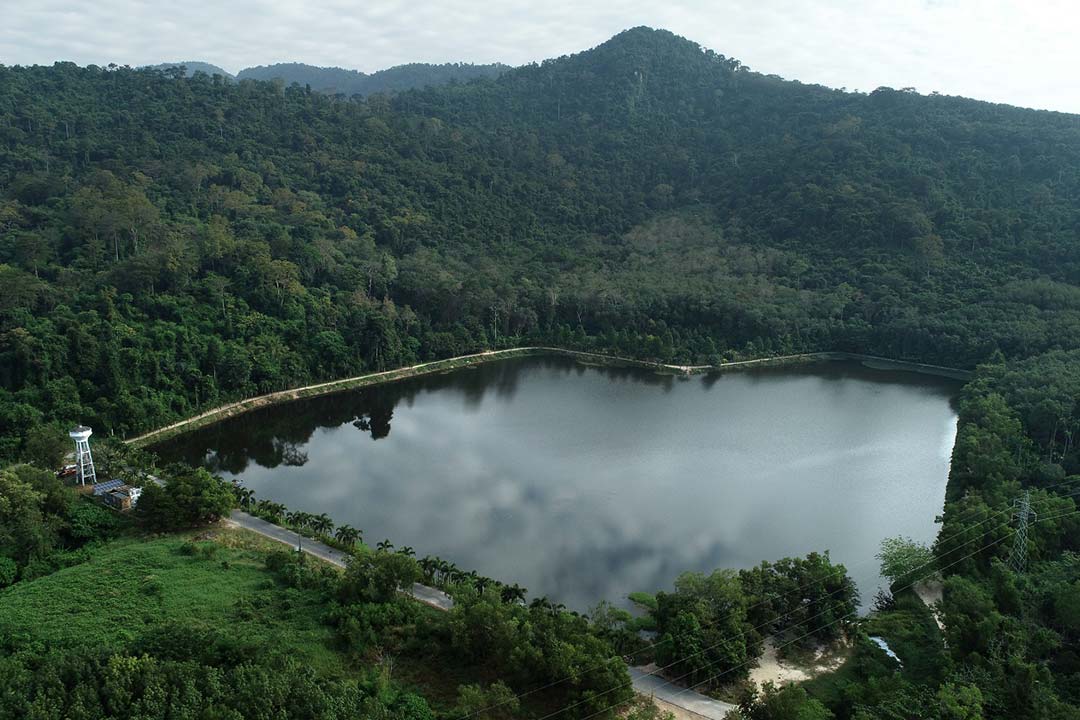
A Decade of Tangible Results
While restoring forests and water sources in the community may take many years, the collaboration and dedication of all parties involved have made a real impact. Consequently, the Map Chan community has been spared from drought crisis for several consecutive years.
"
After establishing a community water management plan, the Map Chan community and other communities surrounding Khao Yai Da and SCGC proceeded according to the plan. Over a span of more than 10 years, it has been found that the headwater forests of Khao Yai Da have been found to contribute to an annual total water yield of 14.83 million cubic meters. An aerial photographic study also revealed an increase in forested areas, housing up to 120 different plant species and habitat for 123 species of wild animals. Furthermore, they play a role in mitigating global warming, as the average annual temperature has decreased by 1.6 degrees Celsius. These forests have captured 38.49 tons of carbon dioxide per rai.
"
To be a part of building a resilient community and promoting communities with good water management, SCG Chemicals, or SCGC, has taken measures to ensure the sustainable management of water resources. SCGC has established the "Sustainable Water Management Learning Center in Communities around Khao Yai Da." This center aims to pass on knowledge to the community and local water management networks and serve as a platform for exchanging insights on sustainable water management in the future.



